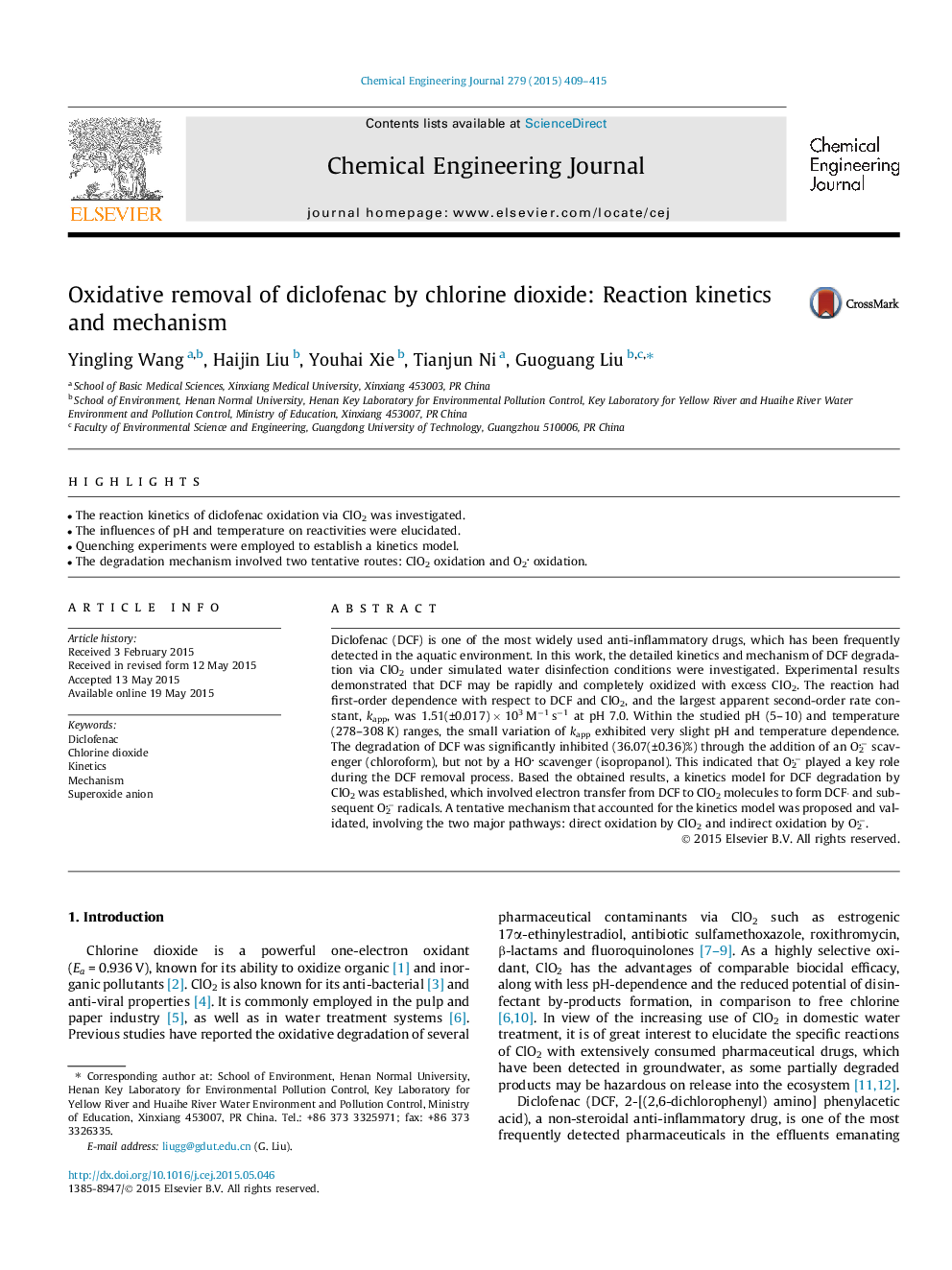| کد مقاله | کد نشریه | سال انتشار | مقاله انگلیسی | نسخه تمام متن |
|---|---|---|---|---|
| 146084 | 456362 | 2015 | 7 صفحه PDF | دانلود رایگان |
• The reaction kinetics of diclofenac oxidation via ClO2 was investigated.
• The influences of pH and temperature on reactivities were elucidated.
• Quenching experiments were employed to establish a kinetics model.
• The degradation mechanism involved two tentative routes: ClO2 oxidation and O2 oxidation.
Diclofenac (DCF) is one of the most widely used anti-inflammatory drugs, which has been frequently detected in the aquatic environment. In this work, the detailed kinetics and mechanism of DCF degradation via ClO2 under simulated water disinfection conditions were investigated. Experimental results demonstrated that DCF may be rapidly and completely oxidized with excess ClO2. The reaction had first-order dependence with respect to DCF and ClO2, and the largest apparent second-order rate constant, kapp, was 1.51(±0.017) × 103 M−1 s−1 at pH 7.0. Within the studied pH (5–10) and temperature (278–308 K) ranges, the small variation of kapp exhibited very slight pH and temperature dependence. The degradation of DCF was significantly inhibited (36.07(±0.36)%) through the addition of an O2− scavenger (chloroform), but not by a HO scavenger (isopropanol). This indicated that O2− played a key role during the DCF removal process. Based the obtained results, a kinetics model for DCF degradation by ClO2 was established, which involved electron transfer from DCF to ClO2 molecules to form DCF· and subsequent O2− radicals. A tentative mechanism that accounted for the kinetics model was proposed and validated, involving the two major pathways: direct oxidation by ClO2 and indirect oxidation by O2−.
Journal: Chemical Engineering Journal - Volume 279, 1 November 2015, Pages 409–415
